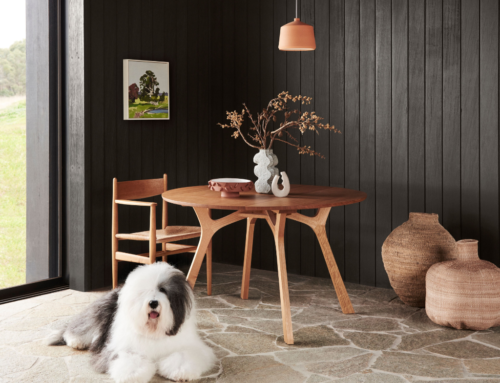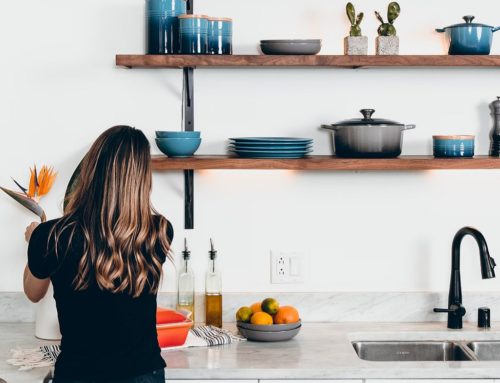We all look at our home and see things we would like to change. You might even have big plans to turn your pokey home into a grand-design masterpiece, but renovations cost big money and something “more important” always comes along.
While it would be nice to find a way to do things on-the-cheap, you also don’t want to end up with something that’s falling apart at the seams. All it takes is a little strategic thinking to cut costs without cutting corners, and remember that every little bit really does add up:
1. Renovate, or reorganise?
You might find that all you really need to do is reorganise your current space to make it more useable. Look at your storage options and whether you can replace bulky drawers with concealed cabinets or higher storage. We had a huge L-shaped couch that took up half our lounge and left a narrow gap to walk past. We were considering building a wall behind it and turning that space into a separate room, but instead we took the middle part of the couch out and replaced it with the coffee table. It completely opened up the lounge space, gave us more space to walk past the couch, and now we can use the area behind the couch as a separate lounge area (AKA xbox area) which uses the removed part of the couch.
2. Let the light back in
Before cutting a big hole in your pocket for those bifold doors or getting a sparky in to rewire some new lights, consider less invasive – and less expensive – ways of capturing light. Skylights are a great alternative and can come in all shapes and sizes for any room, including solartube skylights for hallways.
3. Demolition day
You can make huge savings by using recycled or lightly used building materials – we saved $1000 on a ranch slider by buying second hand! Beware, some tradies and builders won’t guarantee their work if they have to use salvaged items because they don’t want to assume the liability if something goes wrong. That said, if you’re doing your own work, you can find anything from prehung doors and windows to acrylic skylights and reclaimed hardwood timber floors. Don’t forget that this works in reverse. Salvage any reusable materials and you’ll save on skip and rubbish removal fees. A flexibin is a great option for waste, as you can keep it as long as you need it, and it will get picked up for one flat fee once full. It’s also cheaper to do your own demolition, but you MUST be careful not to take out any load-bearing walls, or worse still, saw through live wiring or plumbing.
4. Think long-term
Consider long-term costs. Weigh-up the cost of pre-finished materials against materials that will require additional work later on. Some examples of this include primed and painted weatherboards, decking boards, skirtings and even some prefabricated wall finishes. These materials cost more upfront but you may think it’s worth the time and money saved down the track by avoiding so much painting.
5. Tap into your tradie’s sources
When it comes to things like flooring, ask your tradie if he has stock left over from other jobs. Sometimes tradies have mates who are about to trash material from a demolition job and want material taken away, which means you might just get something for nothing (OK, that’s unlikely, but it will be cheaper than buying new).
6. Scale back on lighting
Limit recessed lights – especially old-style halogens. Low voltage halogen downlights can cost more to run and usually require eight or 10 for one room to create general lighting. In addition to the fixtures, there’s labour costs to cut all the holes and insulate them properly. One wall or ceiling mounted light can also deliver more wattage, which means you may be able to get away with fewer fixtures.
7. Save $ on architects
You might need plans drawn up for larger projects, but this doesn’t mean that you need an architect. You might be able to get away with a draftsman, who will only charge 1-3% of final building cost, as opposed to the 4-6% from an architect.
8. Put in sweat equity
Unless you’ve got loads of time (and expertise) to spend on your project, the best way to add sweat equity is up front, by handling your own demolition, or at the back end, by doing some of the finish work yourself. Most people can try their hand at installing insulation, painting, sanding and rubbish removal. And slash your material delivery fees by picking up goods yourself – unless that would require hiring a van/truck which may be just as expensive.
9. Demolish and start from scratch
It’s a fact that major renovations can cost more than building from new. Carefully weigh up the best approach to renovating if demolishing and starting again is an efficient option. Don’t schedule your reno in the height of peak demand times for builders – wait until there is a lag and fit in with their availability to get the best price.
10. Everything but the Kitchen sink
Don’t move the kitchen sink. Or the toilet, if you can avoid it. If your new layout requires that you move the toilet, use the opportunity to upgrade the pipes at the same time.
11. Plan with stock sizes in mind
Use manufacturers’ off-the-shelf dimensions from the outset and you will save the premiums of custom fabrication. Buying doors, windows and storage systems in normal sizes will save hundreds, if not thousands. This also applies to kitchens, which can be bought cheaply from flatpack factories if you don’t need to custom-make each cabinet.
12. Make renovation decisions early
Start prowling the aisles at the hardware store way before the wrecking crew shows up. Get a good feeling for what you want in fixtures and appliances and what they cost. If you aren’t absolutely specific up front about what you want, you’ll have to rely on your builder’s allowance or quote, and his notion of what is acceptable may be quite different from yours. For instance, you may have had a glass-tile backsplash in mind, but your builder priced in basic white ceramic tiles.






Leave A Comment
You must be logged in to post a comment.